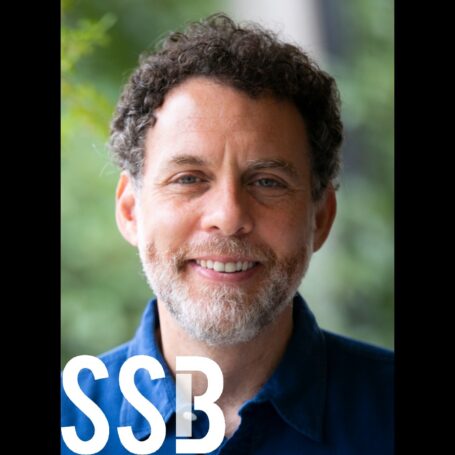SBE Draws Three Flags in Football-Themed Waste Report
 Picking up the mantle of the retired Tom Coburn, his replacement as a U.S. senator from Oklahoma has issued a list of projects deemed wasteful. James Lankford, like Coburn a Republican, on Monday released the football-themed Federal Fumbles: 100 Ways the Government Dropped the Ball.
Picking up the mantle of the retired Tom Coburn, his replacement as a U.S. senator from Oklahoma has issued a list of projects deemed wasteful. James Lankford, like Coburn a Republican, on Monday released the football-themed Federal Fumbles: 100 Ways the Government Dropped the Ball.
In a forwarding letter addressed to “my fellow taxpayers,” Lankford wrote, “I present this report as a demonstration of ways we can cut back on wasteful federal spending and burdensome regulations to help families, small businesses, and our economy begin to get out from under the weight of federal stagnation.” Federal Fumbles (PDF here) is a direct descendant of Wastebook, Coburn’s annual punny compendium of what he saw as dumb spending and silly regulation by federal entities.
Some of the examples Federal Fumbles flags already are widely known, like that $43 million dollar CNG gas station in Iraq’s outback, or the hundreds of millions spent to train Syrian rebels that has so far produced 60 fighters, while others are less well known but pretty bizarre – you need a license to exhibit your llamas. And many of the book’s recommendations seem genuinely valuable, such as combining prescription drug purchasing across agencies can save money or ensuring the Social Security Administration doesn’t send checks to dead people, while others seem predictably Republican – repeal Obamacare, reduce regulation.
And like the Wastebook, Federal Fumbles takes multiple shots at National Science Foundation grants for research that doesn’t tickle the senator’s funny bone. In fact, six of the 100 examples in to book center on NSF activities, which ties it on the hall of shame with the Environmental Protection Agency and the Department of Defense, but ahead of the National Park Service (four sacks) and below the Internal Revenue Service (nine).

Republican James Lankford, the junior U.S. senator from Oklahoma, was a Baptist minister before he entered politics.
In general, the shots at the NSF tend to ignore some obvious applications or the funded research – robotic-assisted dressing for the elderly (or perhaps the disabled) does have utility, and the advances in robotics it creates will spill over into more economically obvious projects. Or they focus on cheap shots based on ‘silly’ aspects of the grant proposal or subject, such as the $50,000 to create secure random number generator (made the mistake of mentioning this could have applications in casinos) and another $50,000 to create a card game about snails — Killer Snails: Assassins of the Seas — for elementary school kids. “Although creativity is admirable, one has to question the allocation of taxpayer funds to a video game and e-book about a snail, no matter how lethal it may be,” Lankford wrote.
Three of the six NSF subjects for ridicule were drawn from grants made by the Directorate of Social, Behavioral and Economic Science, and two of those centered on political science. While social and behavioral science continues to be a favorite whipping boy for some Republican legislators, political science in particular has felt the brunt. Especially from Coburn, whose ‘Coburn amendment’ once restricted federal funding for political science research to projects that promote national security or the economic interests of the United States.
In one SBE grant flagged by Lankford, “Understanding the Mechanisms for Disengagement from Contentious Political Interaction,” principal investigator Jaime Settle of the College of William and Mary received $149,975 “to better understand which facets of social interaction about politics are most stress inducing, for which kinds of people, and in which contexts.” As the abstract notes:
Democratic behavior hinges on the idea that all citizens have equal opportunity to voice their opinions. Barriers to participation and representation—based on gender, race, class, and education level—persist and remain formidable challenges. However, we should not overlook more-subtle-and perhaps more complex-barriers to engagement based on people’s orientation toward conflict and disagreement. People who prefer consensus and compromise may be discouraged from engaging meaningfully with politics in a polarized environment.
Lankford’s riposte?
The ultimate goal is to decrease that stress in order to ‘energize and enfranchise citizens who are discouraged by our current political system.’ There is no doubt that civil discourse is critical for a more successful and vibrant democracy. But it is doubtful that connecting stress to political interactions is a topic the agency ‘tasked with keeping the United States at the leading edge of discovery’ should spend scarce federal resources to study.
The senator also took aim at a study headed by Adam Berinsky and Teppei Yamamoto at the Massachusetts Institute of Technology that attempted to answer “Does media choice cause polarization or does polarization cause media choice?”
Lankford felt that this particular question wasn’t worth adding to the sizable federal deficit ($19 trillion by his count) to answer:
A lot of ink has been spilled to explore the link between political polarization and the media. Thanks to NSF, American tax dollars now join the plight. NSF will provide at least $406,419 to MIT researchers to attempt to answer the question, ‘Does media choice cause polarization or does polarization cause media choice?’ It is an existential question that will be a surefire conversation-starter at any family dinner, but it is doubtful the substance of the question merits the use of hundreds of thousands of taxpayer dollars to advance the knowledge of whether MSNBC and Fox News are the cause or result of the American political system. If the government study does confirm a linkage, will the response be to limit the First Amendment right to a free press?
“NSF strikes again—this time by funding research intended to delve into the dating habits of single adults over the age of 60,” Lankford began his assault on a social psychology study overseen by Lisa Neff, Jennifer Beer, and Paul Eastwick (former co-principal investigator) from the University of Texas at Austin. The academics noted that the existing literature on romance – scientific literature, that is – focused either on younger people or those together after decades, and with a growing senior population of singles it was time to fill that gap. And the ultimate goal? “Results from this study will be informative for improving happiness and health throughout the lifespan.”























































































